At the end of this comprehensive abiotic and biotic factors lesson plan, students will be able to describe biotic and abiotic parts of an ecosystem in which organisms interact. Students will also be able to investigate how organisms and populations in an ecosystem depend on and may compete for biotic and abiotic factors. Each lesson is designed using the 5E method of instruction to ensure maximum comprehension by the students.
The following post will walk you through each of the steps and activities from the abiotic and biotic factors lesson plan.
ENGAGEMENT
At the beginning of the lesson, the class will play a game titled Oh Deer! Students will learn about how organisms and populations in ecosystems depend on many factors in order to survive. After the teacher and students will discuss the objectives and some of the relevant vocabulary using the included objective statements and word wall cards.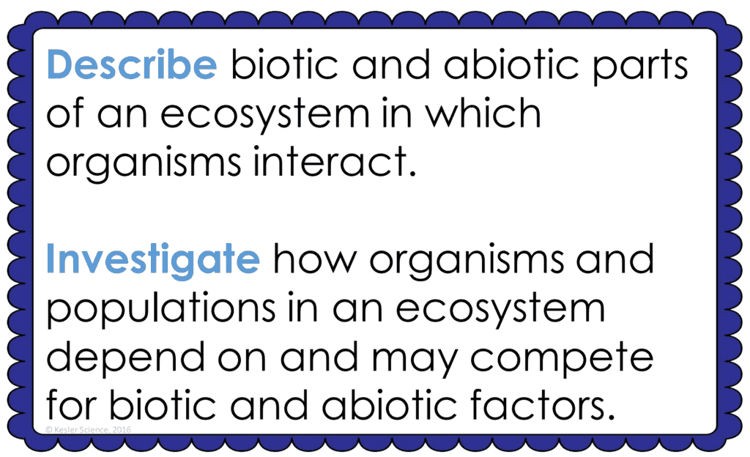

The engagement activity continues with a Think-Pair-Share activity to discuss what the students discovered or realized during the game. The teacher will help to clear any misconceptions about only biotic factors affecting the success of the ecosystem, ecosystems change little over time, and how species coexist in ecosystems because of their compatible needs and behaviors with other species.
Estimated Class Time for the Engagement: 20-30 minutes
EXPLORATION
This student-centered station lab is set up so students can begin to explore abiotic and biotic factors. Four of the stations are considered input stations where students are learning new information about abiotic and biotic factors, and four of the stations are output stations where students will be demonstrating their mastery of the input stations. Each of the stations is differentiated to challenge students using a different learning style. You can read more about how I set up the station labs here.
EXPLORE IT!
Students will be working in pairs to sort a number of cards into 2 piles. Students will make connections to the piles they are creating and how they represent both abiotic and biotic factors. Once students have completed the sort, they will then be asked to think about a certain ecosystem and list a few abiotic and biotic factors.
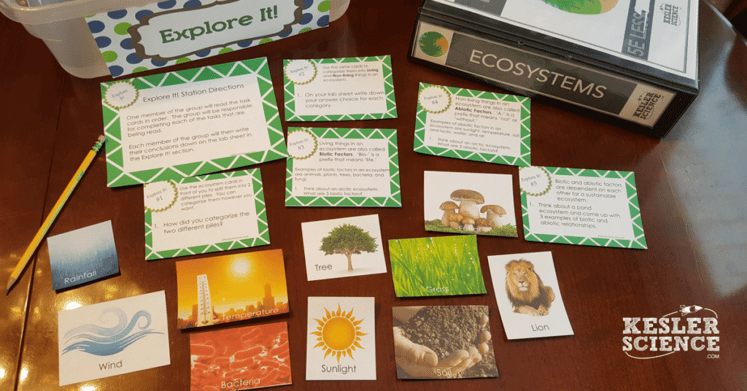
WATCH IT!
At this station, students will be watching a 2 and a half minute video describing abiotic and biotic factors. The video will give the students a quick description of what abiotic and biotic factors are. The video will then show students how these two factors interact and depend on one another. Students will then answer questions related to the video and record their answers on their lab station sheet.
RESEARCH IT!
The research station will allow students to get online and interact with an online resource created by TEA (Texas Education Agency). Students will be learning about competition, limiting factors, and carrying capacity. With each concept, students will answer a few questions to help make the research more concrete.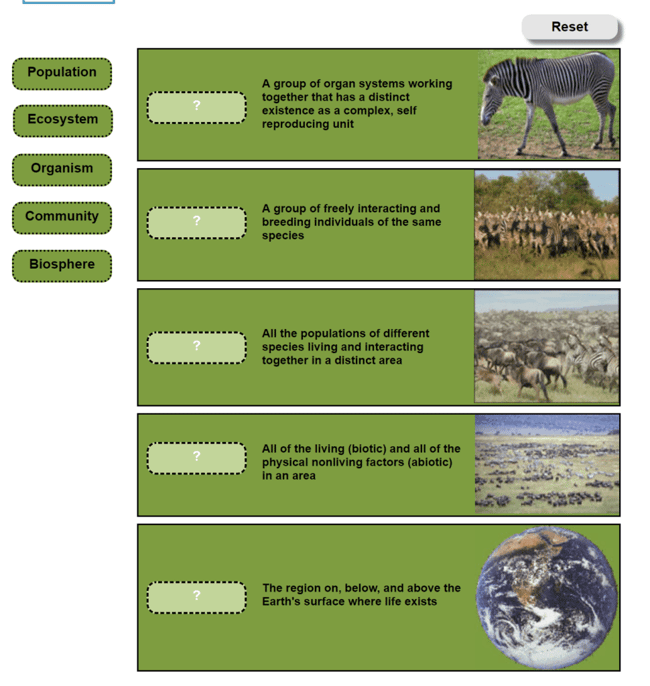
READ IT!
This station will provide students with a one page reading about limiting factors and carrying capacity. In the reading students will discover how abiotic factors and biotic factors depend on each other otherwise the ecosystem can change. Students will then answer 4 multiple choice questions pertaining to the reading, for example, how a decrease in abiotic factors affect population growth, and what determines carrying capacity.
ASSESS IT!
The assess it station is where students will go to prove mastery over the concepts they learned in the lab. The questions are set up in a standardized format with multiple choice answers. Some questions include asking to identify abiotic factors, to determine which factors are considered abiotic, which abiotic factor do plants have to compete for, and finally to validate a statement as true.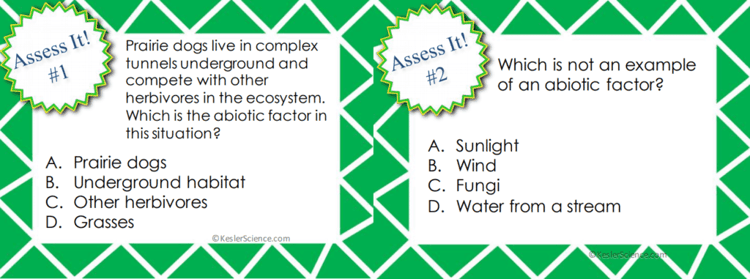
WRITE IT!
Students who can answer open-ended questions about the lab truly understand the concepts that are being taught. At this station, the students will be answering three questions like to compare the terms abiotic and biotic and provide examples. Explain situations where two different species compete for the same abiotic resource. Finally, students will have to infer what life would be like in the Sahara when the abiotic resource, water, has become very limited.
ILLUSTRATE IT!
Your visual students will love this station. Students will be illustrating a number of abiotic and biotic factors in a forest ecosystem. Along with this illustration, students must also show how these factors interact and show some sort of competition.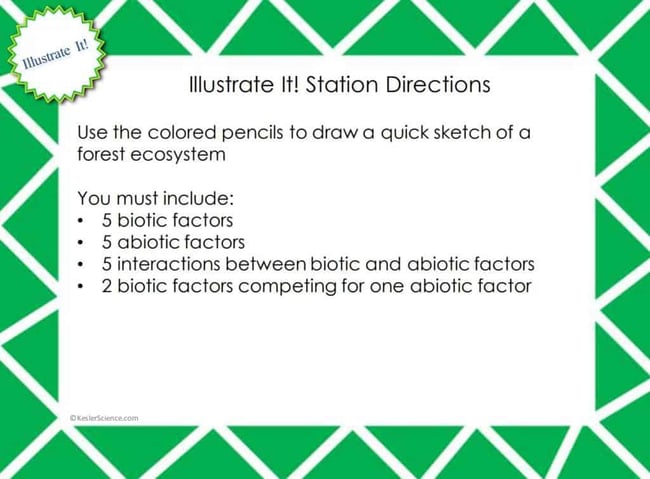
ORGANIZE IT!
The organize it station allows your students to use a manipulative to match information provided to either abiotic factors or biotic factors.
Estimated Class Time for the Exploration: 1-2, 45 minute class periods
EXPLANATION
The explanation activities will become much more engaging for the class once they have completed the exploration station lab. During the explanation piece, the teacher will be clearing up any misconceptions about abiotic and biotic factors with an interactive PowerPoint, anchor charts, and interactive notebook activities. The abiotic and biotic factor lesson includes a PowerPoint with activities scattered throughout to keep the students engaged.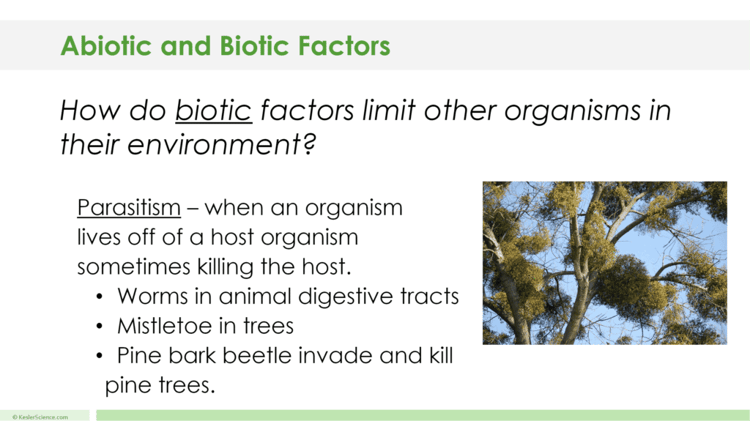
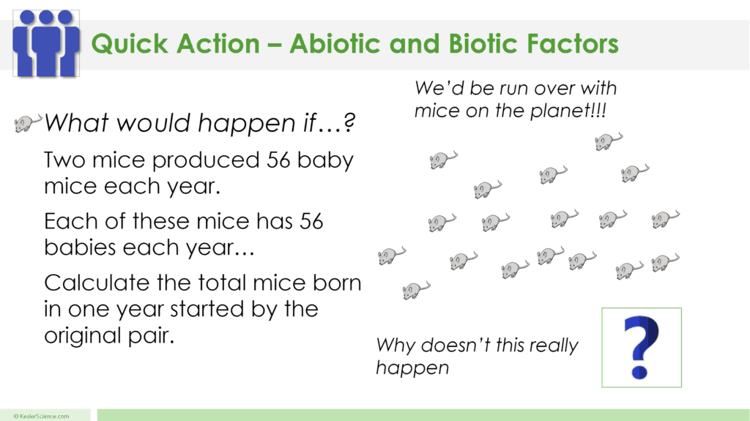
The students will also be interacting with their journals using INB templates for abiotic and biotic factors. Each INB activity is designed to help students compartmentalize information for a greater understanding of the concept. The abiotic and biotic factors INB template will challenge the students to understand and visualize the expansion of the universe.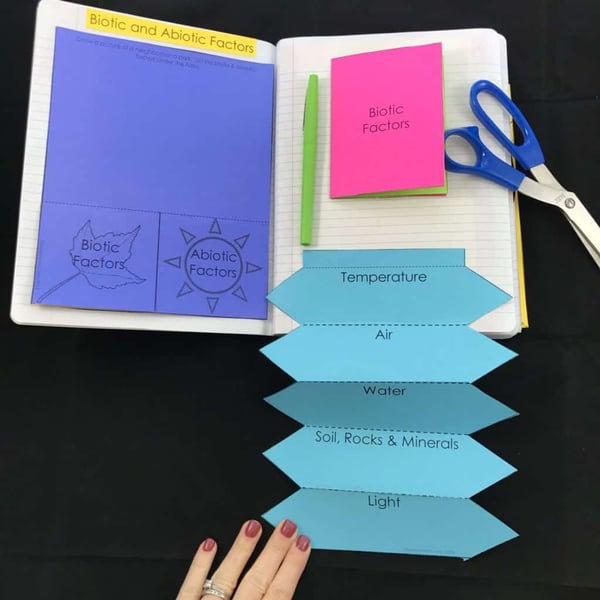 Estimated Class Time for the Exploration: 2-3, 45 minute class periods
Estimated Class Time for the Exploration: 2-3, 45 minute class periods
ELABORATION
The elaboration section of the 5E method of instruction is intended to give students choice on how they can prove mastery of the concept. When students are given choice the ‘buy-in’ is much greater than when the teacher tells them the project they will have to create. Each of the abiotic and biotic factors projects will allow students to explain the interaction between abiotic and biotic factors.
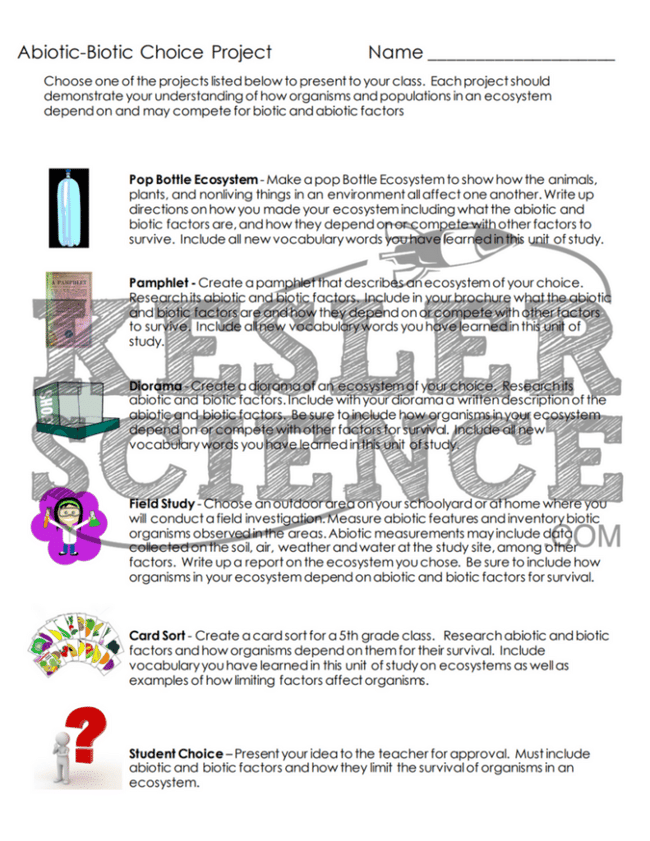
Estimated Class Time for the Elaboration: 2-3, 45 minute class periods (can also be used as an at-home project)
EVALUATION
The final piece of the 5E model is to evaluate student comprehension. Included in every 5E lesson is a homework assignment, assessment, and modified assessment. Research has shown that homework needs to be meaningful and applicable to real-world activities in order to be effective. When possible, I like to give open-ended assessments to truly gauge the student’s comprehension.
Estimated Class Time for the Elaboration: 1, 45 minute class period
DOWNLOAD THE FULL LESSON NOW
The full lesson is available for download from my TpT store. Save yourself a ton of time and grab it now.
Download Over $100 in FREE Resources
For Middle School Science
Simply create a login below and gain immediate access to a selection of our Kesler Science product line worth $100 - for FREE. There's a full version of every product type! You'll also join tens of thousands of middle school science teachers who receive timely tips and strategies straight to their inbox.




